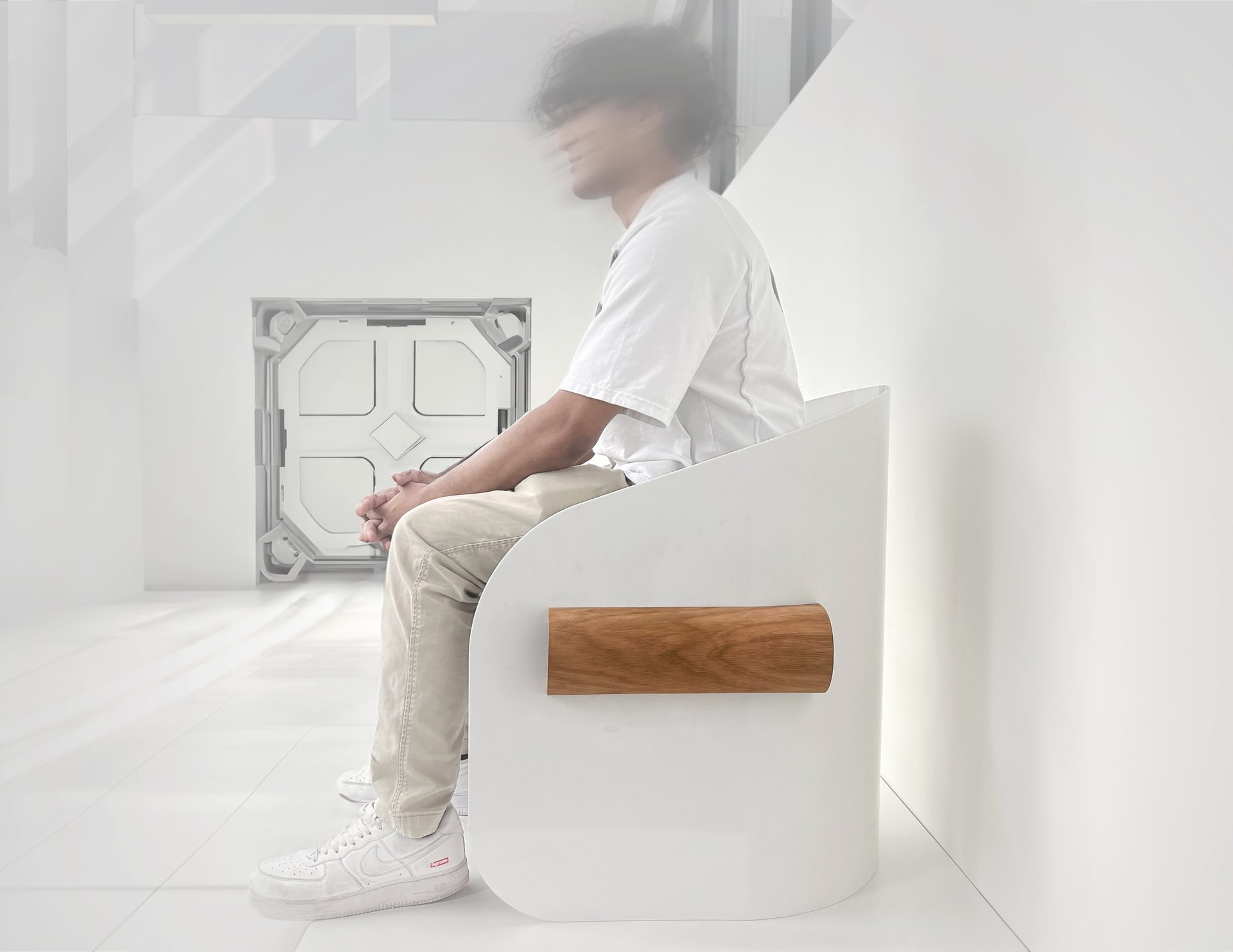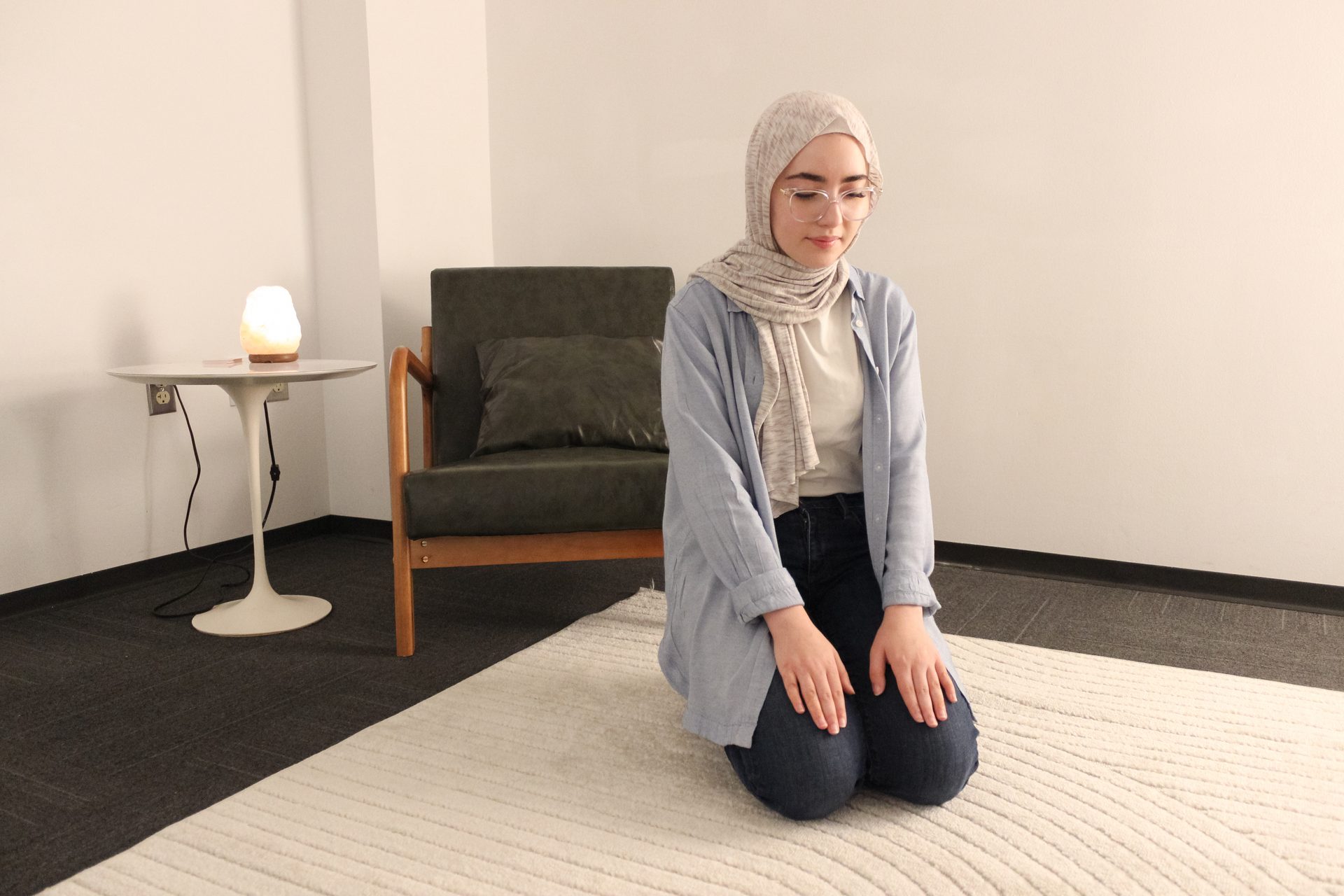SITting at the Top
Hines College industrial design students take home awards for innovative chair designs
by Nicholas Nguyen • June 20, 2024
This year, the SIT Furniture Design Awards recognized four University of Houston Gerald D. Hines College of Architecture and Design industrial design (ID) students for their talent and creativity. The international competition honored professional and emerging designers chosen by a panel of designers, artists, and business owners from around the globe.
“Recognizing both emerging and established designers from around the world underscores our commitment to inspiring innovation in furniture and interior design,” said Astrid Herbert, the co-founder of the SIT Furniture Design Awards. “This year’s winners exemplify the global impact of design creativity and the collaborative spirit that drives our industry forward.”
The four ID students who won awards and received honorable mentions are:
- Adron Blount (B.S. I.D. ’25) for La Fleur, winner in the “Bar Stool” category
- Zach Robison (B.S. I.D. ’25) for Versa, winner in the “Other Chairs” category
- Brandon Burlison (B.S. I.D. ’25) for MuYi, honorable mention in “Furniture Design”
- Srivats Srinivasan (B.S. I.D. ’25) for Chrono, honorable mention in “Furniture Design”
See and learn more about these students’ winning work below.


above: Renderings of La Fleur by Adron Blount show its form and stack-ability; blount holds up his 3d-printed prototype; a rendering of the stool in a setting
La Fleur
“I based my chair form around the concept of a flower with the legs acting as stems, leading up and converging into petal-shaped seats,” Blount described.
Blount’s design bends elegantly, morphing into a stool that considers manufacturing constraints, such as “stackability” and material thickness. While he created 3D-printed models and life-size versions of La Fleur for class, he envisions the construction process as a Monobloc, single-mold construction method where strength and stability are found in the interconnecting plastic structure and compound surfaces of the chair. In the ID curriculum, bringing designs to life through prototypes teaches students how to problem-solve and experiment with technology. Blount recounted how, thanks to improved 3D printing technology, he printed all his chair parts in sections over the course of a weekend.
“La Fleur is made up of 24 individually 3D-printed sections attached with steel rods for alignment and strength,” he explained. “Leveraging a recent improvement to consumer-grade printers allowed me to spend more time in the design phase to refine the form.”


above: Renderings of Zach Robison's Versa show its two seating configurations as a chair or stool and its versatility in aesthetics; the chair imagined in a variety of colors; a portrait of Robison
Versa
Robison drew on personal experience for his versatile design. He revealed, “Versa was inspired by my experience working in the studio and wishing I had a chair to assist me with various functionality. I wanted something that could perform as a lounge chair and work stool.”
Working hard on dozens of iterations, Robison sketched to develop full-scale prototypes to achieve the right proportions for functionality while achieving his aesthetic vision. The challenge paid off.
“It’s validating to see all the hard work my professors and I put into Versa. This award inspires me to keep pushing the envelope on my future projects to tap into their buried potential,” Robison said.
If given the opportunity to pursue the project further, Robison would want to make a working aluminum prototype of Versa. He envisions it as a nimble piece of furniture suited for indoor and outdoor use in an aluminum finish or enamel paint finish, adding color to any space.
“The general concept of my chair, a single shape serving two different sitting positions, could lend itself to a plethora of future iterations,” Robison remarked. “There are many ways this could be stylized or manufactured to look like a completely different chair while serving the same multipurpose functions.”


above: Renderings of MuYi by Brandon Burlison highlight his personal design style; a close up of how the chair is assembled; a portrait of burlison
MuYi
“My goal when designing MuYi was to create something flat packable and economically viable for production via laminated plywood. I learned much about furniture production through this chair design,” Burlison shared.
MuYi takes inspiration from architecture through the work of Frank Gehry and Chinese characters known as hanzi. The chair’s name in Chinese roughly translates to “wooden chair.” In addition to drawing from design and cultural influences, Burlison also applied his own personal design style to the chair.
“I identified what I believe to be my style, coining it as ‘Modern-flow.’ It is a combination of three key elements: modern, flow, and rigid,” he explained.
While MuYi embodies those qualities well, despite Burlison having had no previous interest in furniture design (his other work includes designing prosthetics for patients in the Harris Health System), this project provided him with ample design experience to add to his arsenal of skills. He added, “I look back at MuYi, and it feels like a shift in the quality of work I was aiming to achieve.”


above: Renderings of Srivats Srinivasan's Chrono which detail its timeless form and support skeleton; an image of the chair with srinivasan seated in it; a portrait of srinivasan
Chrono
Named for its form evoking continuity and endurance, Chrono was inspired by the concept of the perpetual flow of time while embodying minimal beauty and timeless design. Blending traditional craftsmanship and modern engineering, the chair integrates a C-channel skeleton beneath the seat to enhance its structural integrity and weight capacity. Grooves in the wooden seat allow the metal form to slot in seamlessly, exemplifying how functionality can drive aesthetic design decisions.
"The process of cutting, rolling, bending, and welding the metal, followed by powder coating and veneering, showcases my commitment to precision and quality in bringing my vision to life," Srinivasan said.
His professor, Min Kang, added, "Chrono is a testament to the creativity and skill of industrial design students who deeply understand form, material, and fabrication to create functional objects with beautiful aesthetics."
In addition to earning a nod for his chair from the SIT Furniture Awards, Srinivasan also won a 2024 Innovation + Design Award from the International Society of Furniture Designers earlier this spring. While winning these accolades feels incredibly meaningful, he shared that the journey of creating and sharing Chrono with his family, friends, and mentors is the true reward. The recognition provides him a platform to showcase his vision, one made possible through collaboration.
"I am deeply thankful to professor Min Kang and my mentors, Spencer Feuerbach and Pascal Bakari, whose guidance was instrumental in bringing this vision to life. These awards celebrate a personal achievement and a collective effort from my friends and family that I hold in the highest regard," Srinivasan shared.
More College of Architecture and Design Stories

Since partnering with the Harris Health System in 2018, the Hines College’s industrial design program students have worked with occupational therapy professionals from Harris Health to help and empower underserved communities in Houston.

The University of Houston and Hines College have expanded their efforts to better support their community and provide the resources needed to improve mental health and well-being. Read about how our community creates meaningful spaces and programs to advance mental health at the College.

A hobby in photography led recent Hines College graduate Felipe Harker (B.Arch. ’24) to find a way to document memories on campus and create a community online through the Instagram account, @UHCloseUp.





